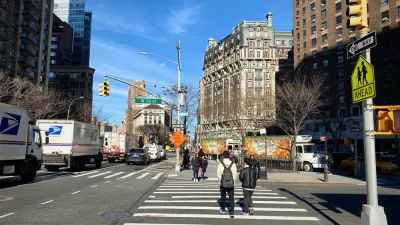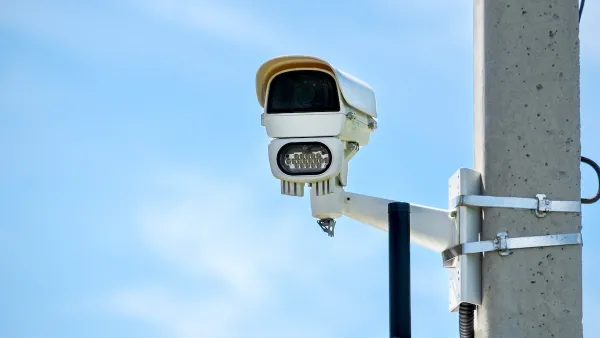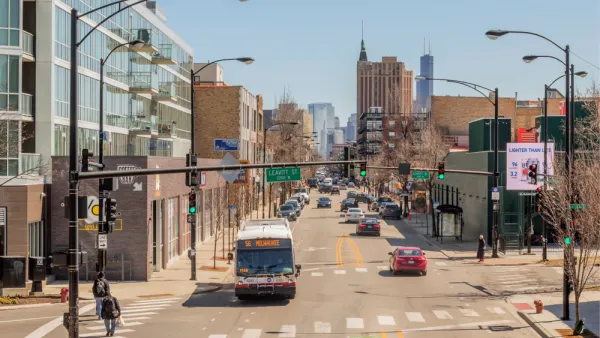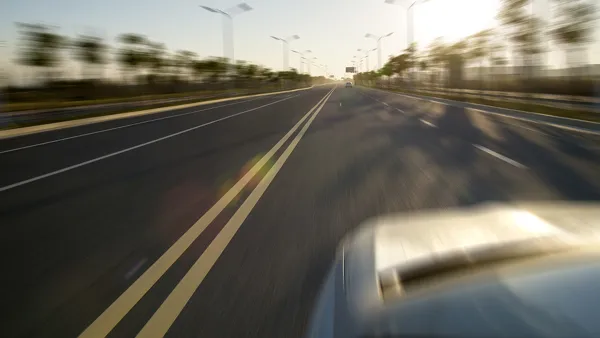New research suggests that fewer speeding tickets are issued in neighborhoods where the city has invested in traffic calming and pedestrian safety improvements.

A study from New York City indicates that, while automated traffic enforcement cameras are evenly distributed across the city's neighborhoods, safe roadways and pedestrian infrastructure are not. As Julianne Cuba and Brian Howald report, "A new map created by activist Brian Howald shows where in the city drivers are getting nabbed for speeding in school zones and blowing through red lights, revealing a pattern of inequity not based on the location of the cameras themselves, but where the city has failed to provide adequate infrastructure that protects vulnerable road users."
Yes, the cameras are evenly distributed geographically in the city, but many tickets are issued in many communities of color because of the wide, speedway-like arterials that cut through such neighborhoods, and which have not been redesigned by the city for safety as they have been in White neighborhoods. The result is not only many speeding tickets written in communities of color, but also that residents of those neighborhoods are disproportionately the victims of road violence, advocates say.
This sheds light on the controversial devices and the argument over whether they unfairly target particular communities, signaling that, as pointed out in a recent ProPublica article, infrastructure—such as wide streets that encourage speeding—matters when it comes to driver behavior and road safety. Cuba and Howald's article quotes lawmakers and activists who want to see automated enforcement coupled with investment in safer roadways. "Such senseless deaths unfortunately happen far too often in our city, but they can be easily prevented with investment in more protective pedestrian and bicycle infrastructure," wrote state Senator Julia Salazar last year.
FULL STORY: Are Speed Cameras Racist?

Analysis: Cybertruck Fatality Rate Far Exceeds That of Ford Pinto
The Tesla Cybertruck was recalled seven times last year.

National Parks Layoffs Will Cause Communities to Lose Billions
Thousands of essential park workers were laid off this week, just before the busy spring break season.

Retro-silient?: America’s First “Eco-burb,” The Woodlands Turns 50
A master-planned community north of Houston offers lessons on green infrastructure and resilient design, but falls short of its founder’s lofty affordability and walkability goals.

Test News Post 1
This is a summary

Analysis: Cybertruck Fatality Rate Far Exceeds That of Ford Pinto
The Tesla Cybertruck was recalled seven times last year.

Test News Headline 46
Test for the image on the front page.
Urban Design for Planners 1: Software Tools
This six-course series explores essential urban design concepts using open source software and equips planners with the tools they need to participate fully in the urban design process.
Planning for Universal Design
Learn the tools for implementing Universal Design in planning regulations.
EMC Planning Group, Inc.
Planetizen
Planetizen
Mpact (formerly Rail~Volution)
Great Falls Development Authority, Inc.
HUDs Office of Policy Development and Research
NYU Wagner Graduate School of Public Service




























